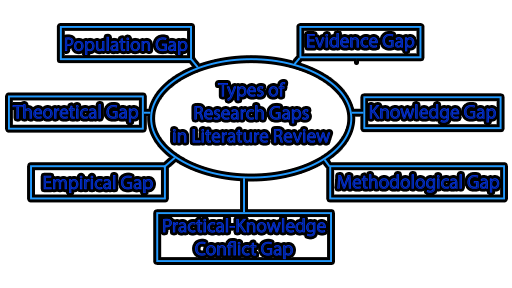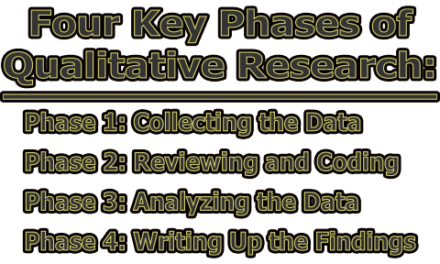A research gap (which indicates a lack of prior research on a topic) is essentially an unanswered question or unsolved issue in a certain discipline. Alternatively, when there is a good number of studies conducted but the findings reflect in multiple ways, making it difficult to draw solid conclusions, there may be a research gap. Let’s take an example; where the goal of your study is to determine the cause (or causes) of a specific disease. In the literature, there is evidence to suggest that smoking is a major contributing factor, but there is also a substantial body of data that shows no connection between smoking and the disease. In that scenario, you may find a research gap that needs further investigation. In the rest of this article, we are going to know about the different types of research gaps in literature review and how to find a research gap.
Definition of Research Gap:
A research gap is essentially an unanswered question or unresolved problem in a field, reflecting a lack of existing research (Grad Coach).
A research gap is a key problem or a question that has not been answered by any of the existing studies within your area of research (Dr. Sowndarya Somasundaram).
From the above definitions, we can say that a research gap is a topic or area where there is a lack of information or insufficient data that prevents reviewers to grasp a conclusion regarding a particular question.
Types of Research Gaps in Literature Review:
According to (Robinson, et al., (2011), Muller-Bloch, & Kranz (2015), and Miles (2017); the research gap can be classified into seven categories which are briefly being:
1. Evidence Gap: An evidence gap occurs with a provocative exception arising if a new research finding contradicts widely accepted conclusions. This gap involves contradictions in the findings of the prior research. It occurs if results from studies allow for conclusions in their own right, but are contradictory when examined from a more abstract point of view. The identification of contradictory evidence starts with analyzing each research stream. Subsequently, the results from these analyses need to be synthesized in order to reveal contradictory evidence.
2. Knowledge Gap: The knowledge gap is a common gap in prior research. There are two settings where a knowledge gap (knowledge void) might occur. First, knowledge may not exist in the actual field of theories and literature from related research domains. Second, it might be the case that the results of a study differ from what was expected.
3. Practical-Knowledge Conflict Gap: This kind of gap tends to be a discrepancy that can motivate new research in this direction. A practical–knowledge (action-knowledge) conflict arises when the actual behavior of professionals is different from their advocated behavior. In this case, the research could seek to determine the scope of the conflict and uncover the reasons for its existence.
4. Methodological Gap: A methodological gap is the type of gap that deals with the conflict that occurs due to the influence of methodology on research results. This gap addresses the conflicts with the research methods in the prior studies and offers a new line of research that is divergent from those research methods. It is noted that it might be useful to various research methods, especially if certain research topics have been mainly explored using a singular or common method.
5. Empirical Gap: An empirical gap is the type of gap that deals with gaps in prior research. This conflict deals with the research findings or propositions that need to be evaluated or empirically verified. For example, the empirical gap often addresses conflicts that no study to date has directly attempted to evaluate a subject or topic from an empirical approach.
6. Theoretical Gap: The theoretical gap is the type of gap that deals with the gaps in theory with prior research. For example, if one phenomenon is being explained through various theoretical models, similar to a methodological gap conflict, there might be a theoretical conflict. Researchers and scholars could examine whether one of those theories is superior in terms of the gap in the prior research. Theoretical gaps are a common occurrence in examining prior research on a phenomenon.
7. Population Gap: A population gap is a common gap recognized among researchers. There are always under-served populations that have been under-researched. This gap is the type of research regarding the population that is not adequately represented or under-researched in the evidence base or prior research (e.g., gender, race/ethnicity, age, etc).
How to Find a Research Gap:
Start with a broad topic related to your field of interest: A broad topic allows you more opportunities to find a research gap. Pick a topic that interests you and that you already know something about. As you learn more about your topic, you can narrow it down further to help you find your focus.
Conduct preliminary research to explore your topic: Begin with a simple online search to learn the basics of a topic. Read encyclopedia entries, journal articles, and recent news articles related to your topic. Then, search online databases for peer-reviewed journal articles related to your topic of study.
Compile a wide range of articles about your topic: Search for different types of articles, like informative texts, research texts, and meta-analyses. This will provide you with a broader understanding of your topic so you can more easily find a gap.
Once you’ve gathered a meaty collection of resources, the section that you really want to focus on is the one titled “further research opportunities” or “further research is needed”. In this section, the researchers will explicitly state where more studies are required – in other words, where potential research gaps may exist. You can also look at the “limitations” section of the studies, as this will often spur ideas for methodology-based research gaps.
By following this process, you’ll orient yourself with the current state of research, which will lay the foundation for you to identify potential research gaps. You can then start drawing up a shortlist of ideas and evaluating them as candidate topics. But remember, make sure you’re looking at recent articles – there’s no use going down a rabbit hole only to find that someone’s already filled the gap.
References:
- Miles, D.A. (2017). A Taxonomy of Research Gaps: Identifying and Defining the Seven Research Gaps, Doctoral Student Workshop: Finding Research Gaps – Research Methods and Strategies, Dallas, Texas, 2017.
- Müller-Bloch, C. & Kranz, J., (2014). A Framework for Rigorously Identifying Research Gaps in Qualitative Literature Reviews, The Thirty Sixth International Conference on Information Systems, Fort Worth 2015, pp. 1–19.
- Robinson, K., Saldanha, I. & McKoy, N.A. (2011). Development of A Framework for to Identify Research Gaps Systematic Reviews, Journal of Epidemiology, 64(1), pp. 1325-1330.

Library Lecturer at Nurul Amin Degree College










